It’s hard to believe that I’ve never thought about doing a Winter Solstice dinner party. The theme of light coming out of dark lends itself so well to our moody winter, and so many solstice traditions honor the elements of Christmas that I love without the need for it to be a religious holiday. In fact, if you’ve claimed yourself as a more ‘spiritual’ person (as we do in our household) then you might want to consider adopting some elements (or going all in!) on this holiday.
While we’ve been talking about adopting Solstice more in our home, this year the fact that we’ll be traveling on Christmas Day (to Ireland for my sister’s wedding!), really gave us the nudge to move our celebrations up to the 21st of December: Winter Solstice. To set the tone for celebrations? A very moody tabletop inspired by nature and an homage to light and dark…
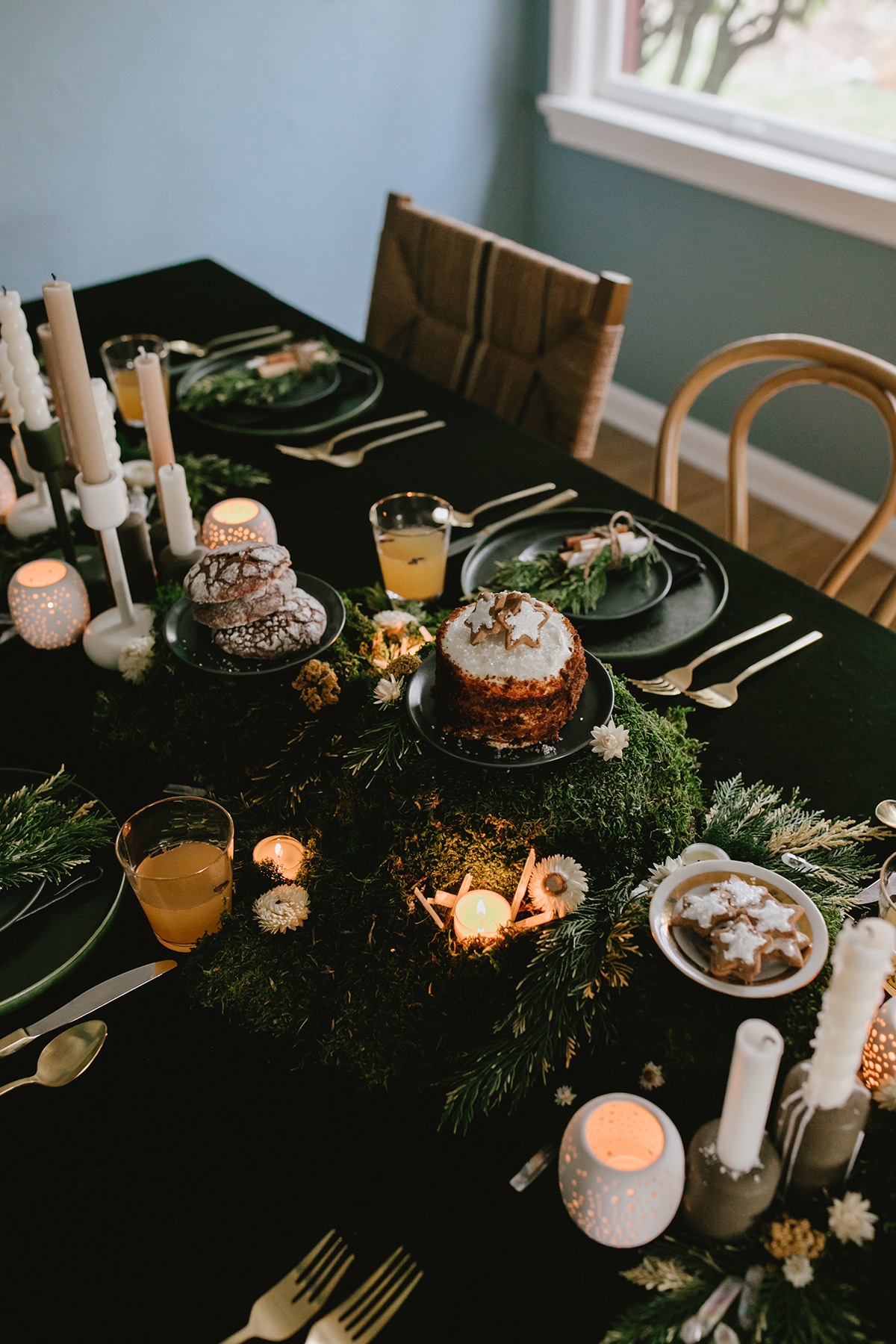
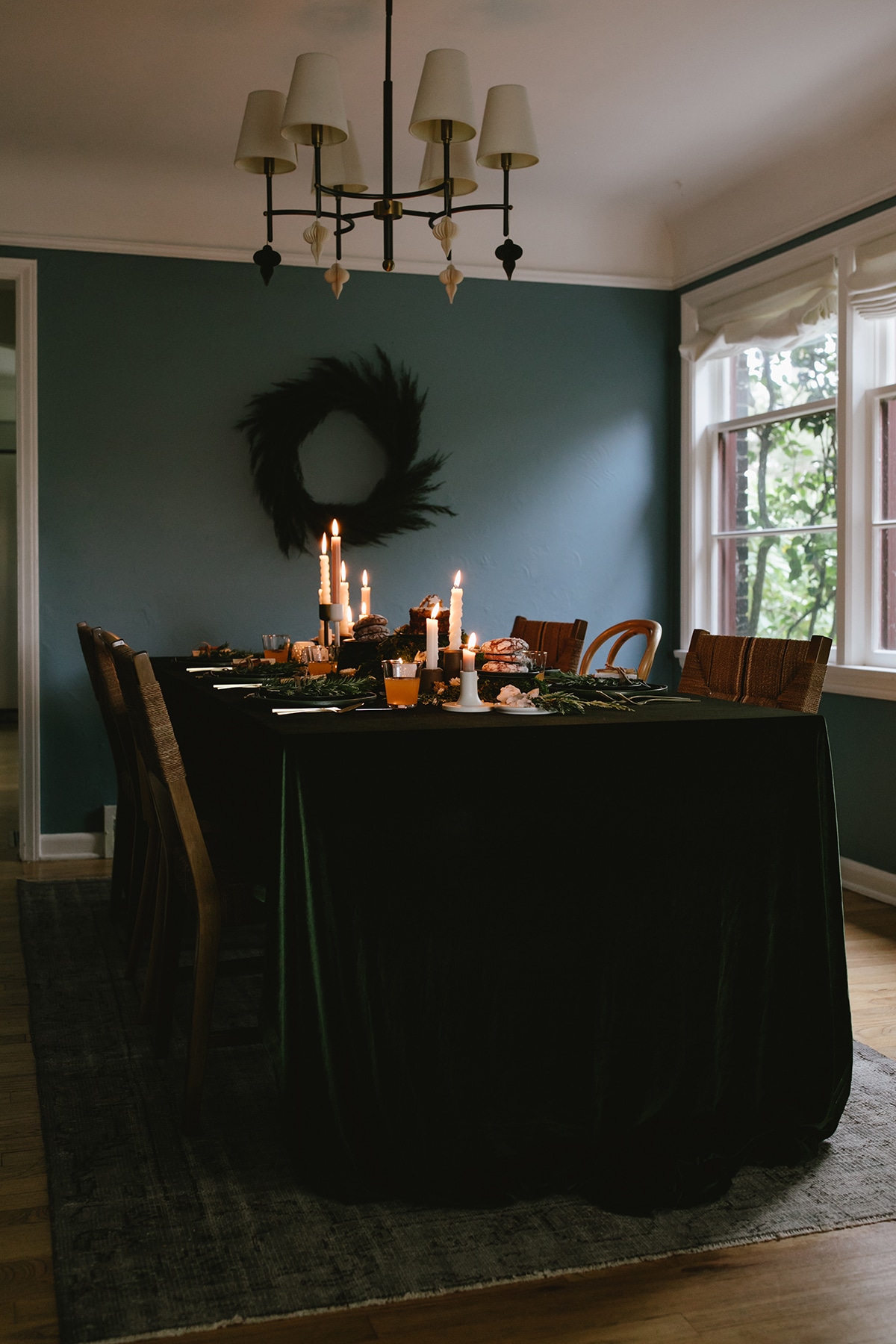
This beautiful celebration full of ancient rituals has informed centuries of traditions, some of which you may recognize in your own home. The tradition of Christmas trees began long before we were decorating them. Egyptian, Roman and Celtic cultures brought in evergreen boughs to decorate their homes in the winter, as way to honor their gods and the return of longer days. Others brought trees into their homes as way to keep the wood spirits warm during the winter. Food and gifts were hung on the branches as an offering. Germanic and Norse traditions created Yuletide as a way to celebrate the solstice, and there is much history to be learned there.
Believe it or not, because of their pagan history, Americans frowned upon the use of Christmas trees, and they were even outlawed at one point! Of course, things have changed quite a bit since then, but I love learning the origins of these traditions, and tying them back to our ancient roots.
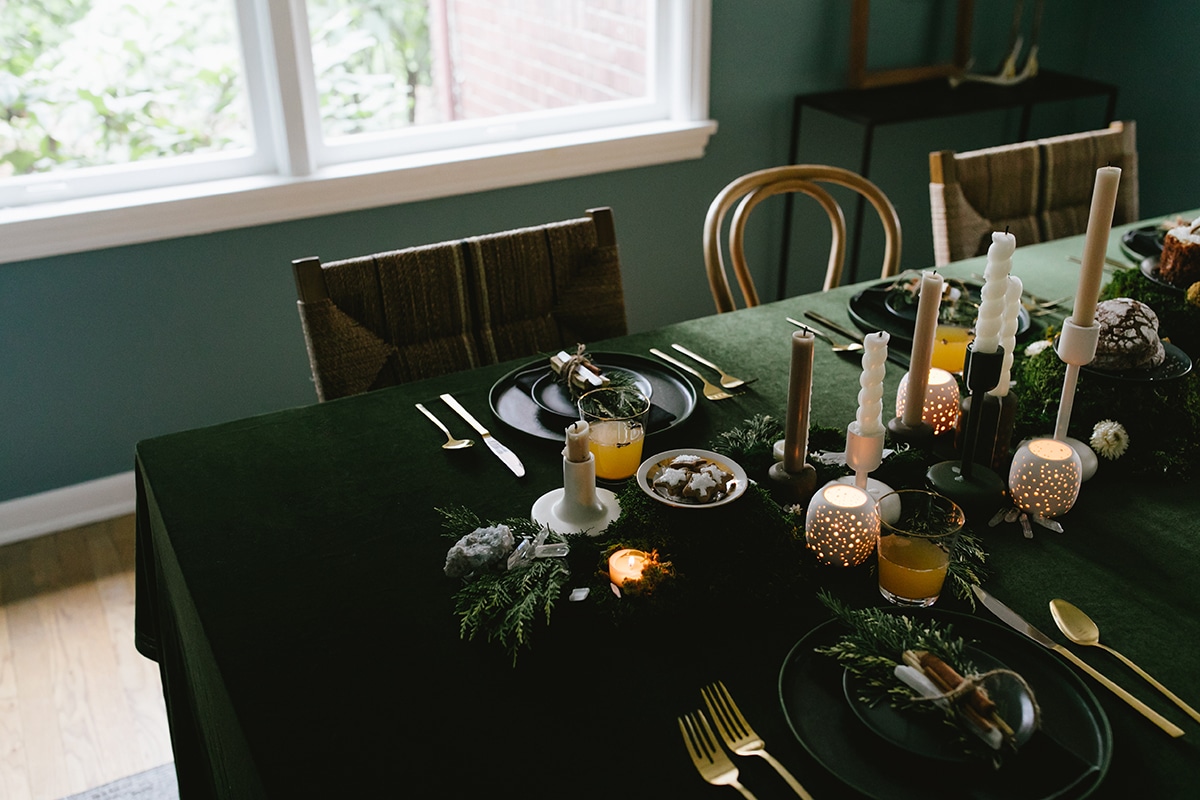
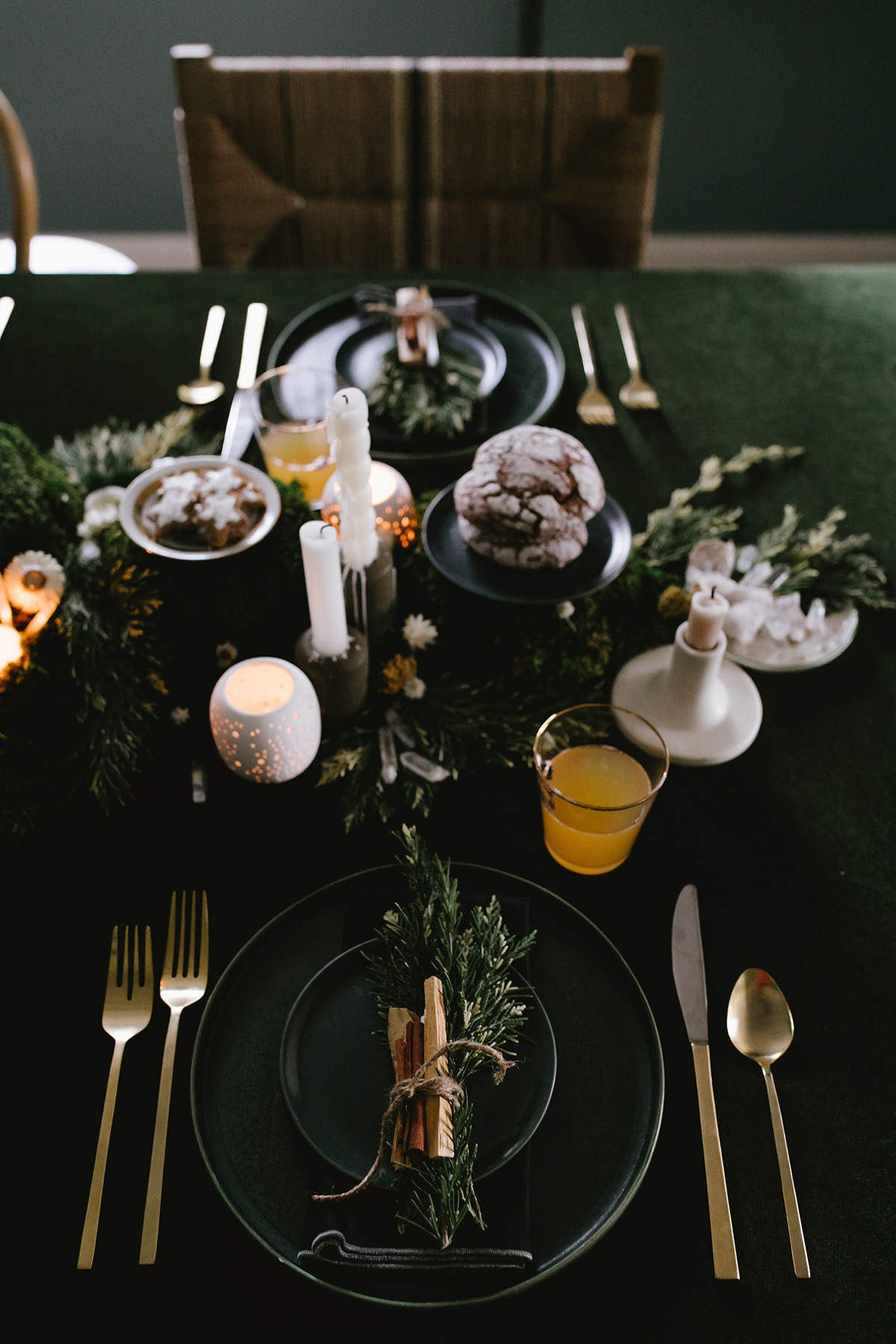
As for our own celebration? I decided to put together a modern take on solstice for my own home. Here’s how we incorporated some traditions into our table.
Decorating with natural materials is a big part of this evening, and so I crafted a table runner of mossy pedestals, with a sprinkling of dried flowers and freshly clipped evergreens. If you’ve strung up dried orange slices, or created orange-clove pomanders for scented decor, then you’ve already participated in some pagan rituals! Part of solstice is creating a food offering of holiday treats, so I added cookies to our mossy pedestals, but really you could do anything. Cheeses, dried fruits… any small bites will do!
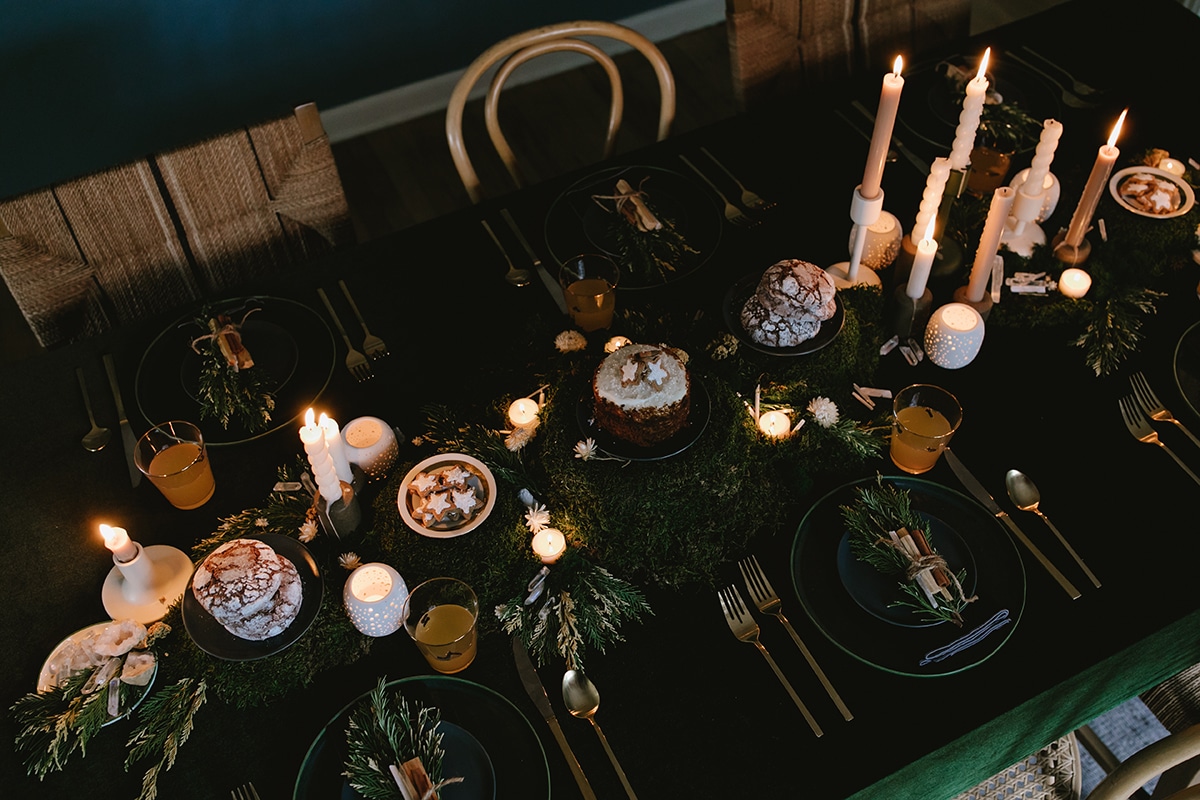
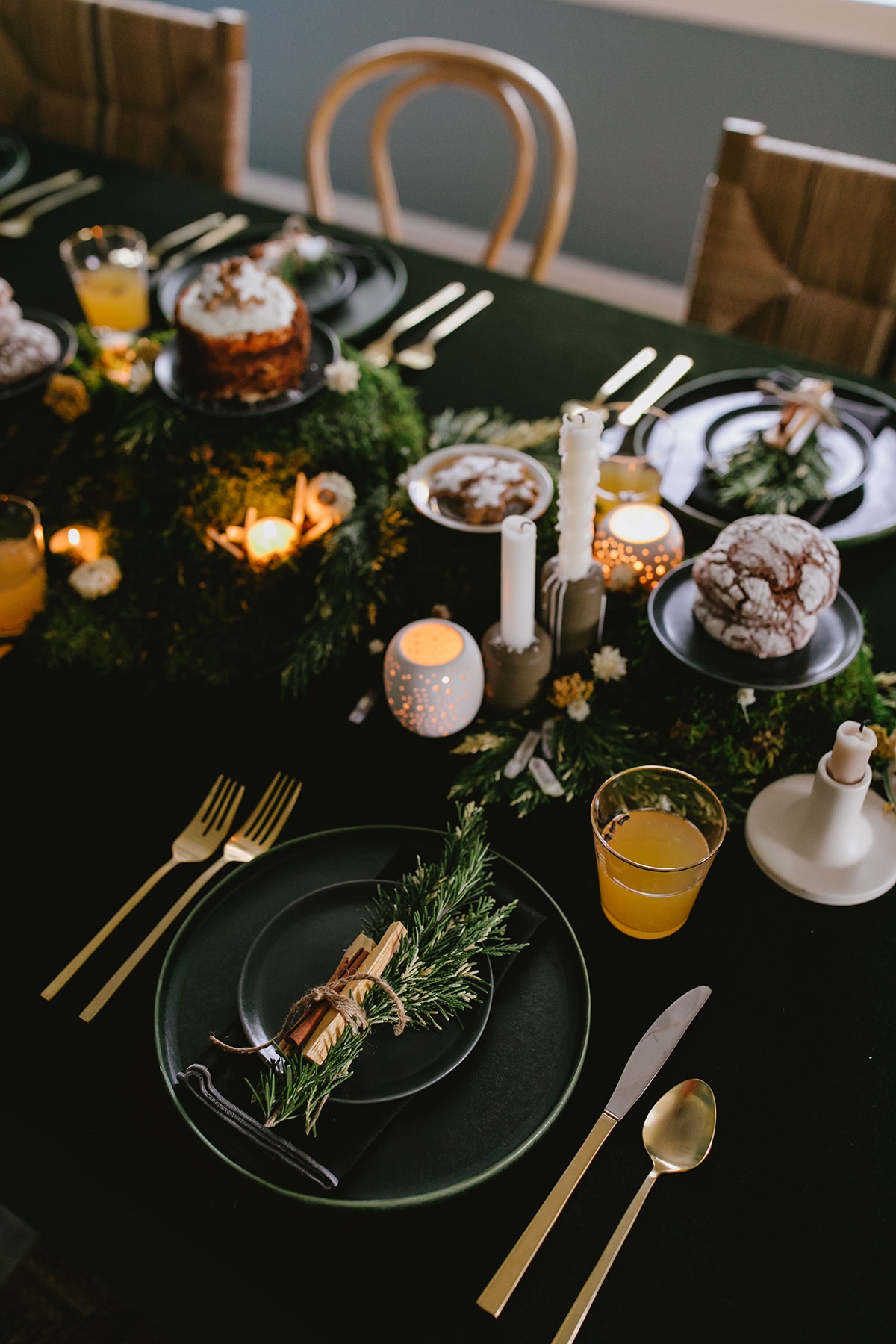
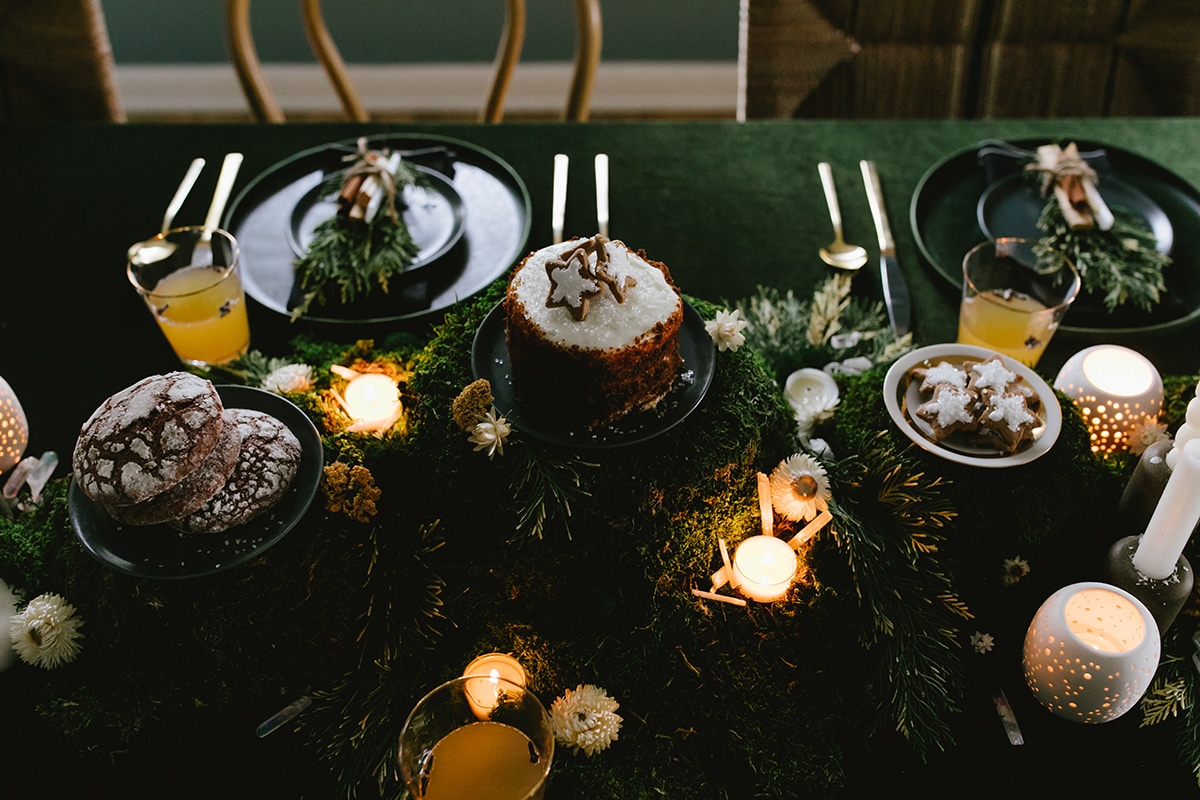
The underlying theme of Winter Solstice is light and dark. This is the longest day of the year, when we are in the most amount of darkness. This solstice is a time for us to literally and metaphorically embrace the dark. This is a time of rest, hibernation, and introspection. It is also a time of release, and many current traditions include writing down things that we want to let go of as the year draws to an end, and burning them in a yule log fire.
To represent this contrast of light and dark, I layered lush dark greens with bursts of white and light. I literally gathered nearly every taper and votive in the house to fill out the mossy runner and create our own version of ‘fire’. If you have a fireplace or fire pit, after dinner, give your guests little slips of paper to write down the things they want to release from this year, and let them toss them into the flames.
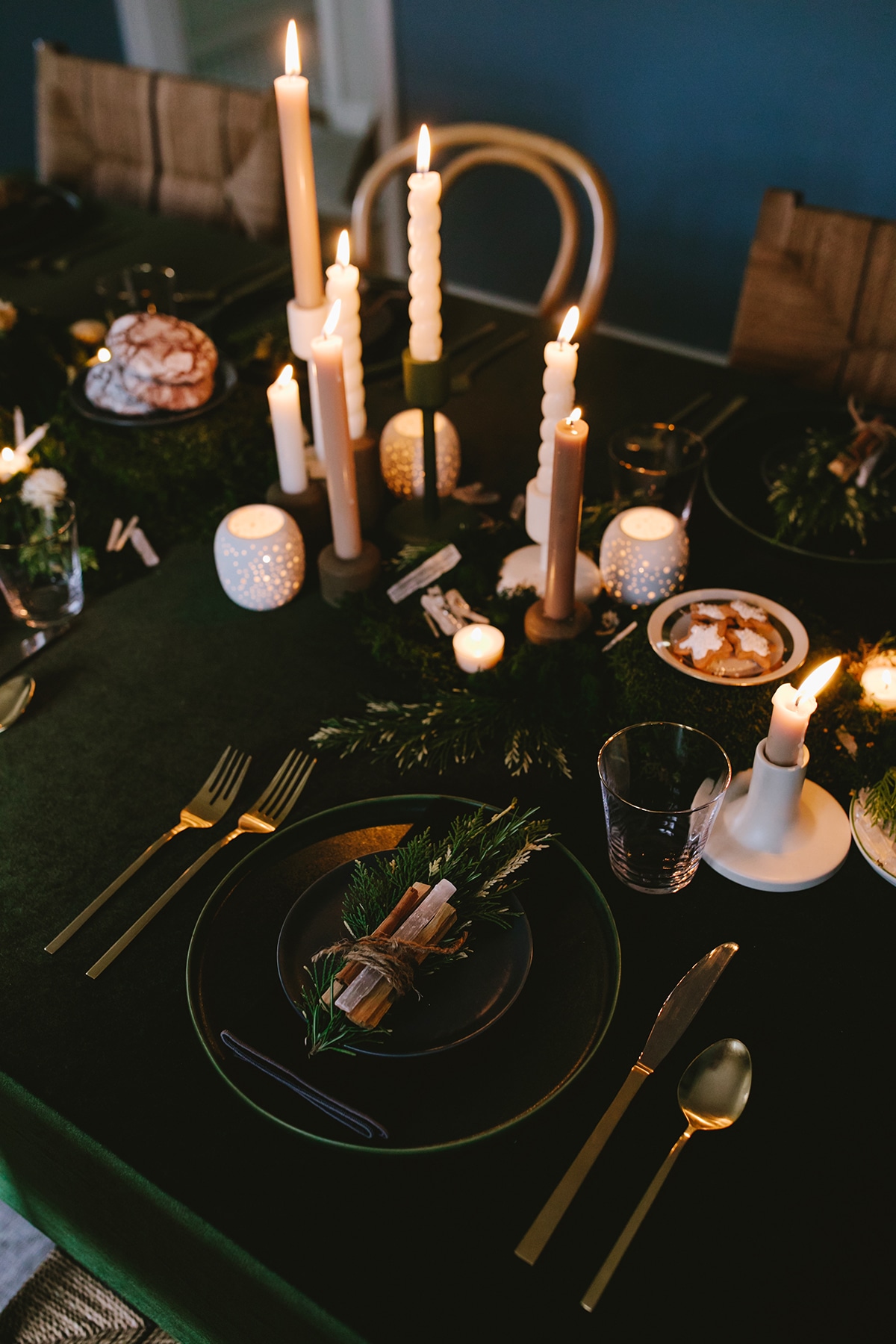
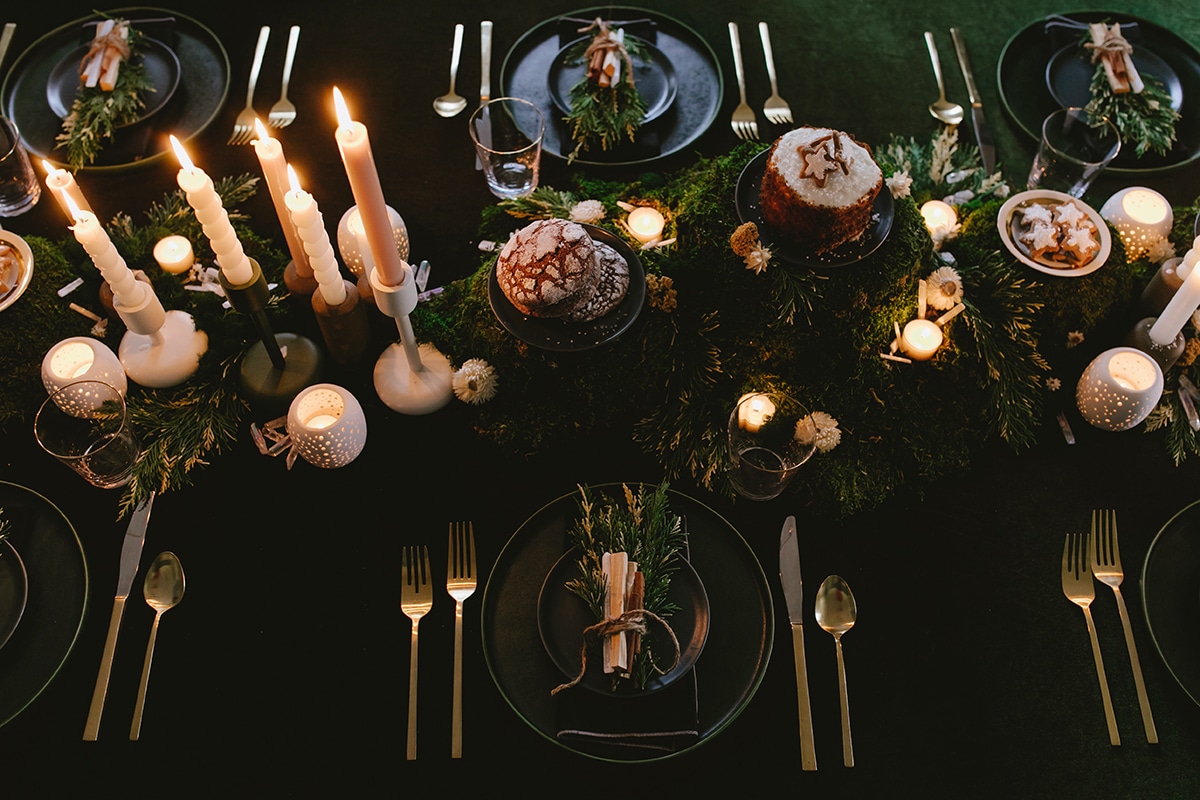
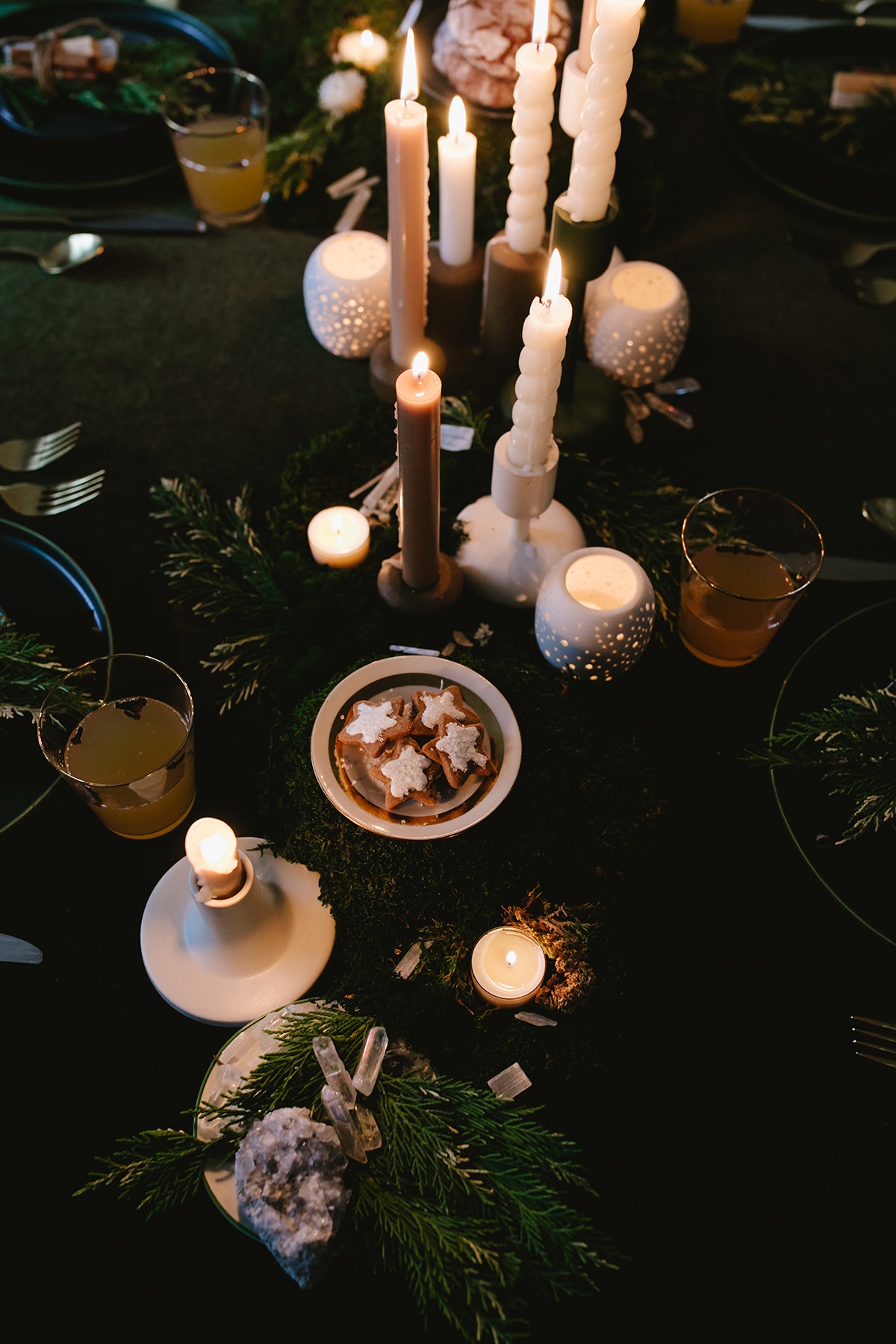
To add a touch of woo to the setting, I included plenty of crystals throughout the table as well. Clear and angel quartz as well as selenite are all highly cleansing, and they feel so wintery! I tucked them around the candles for extra glow.
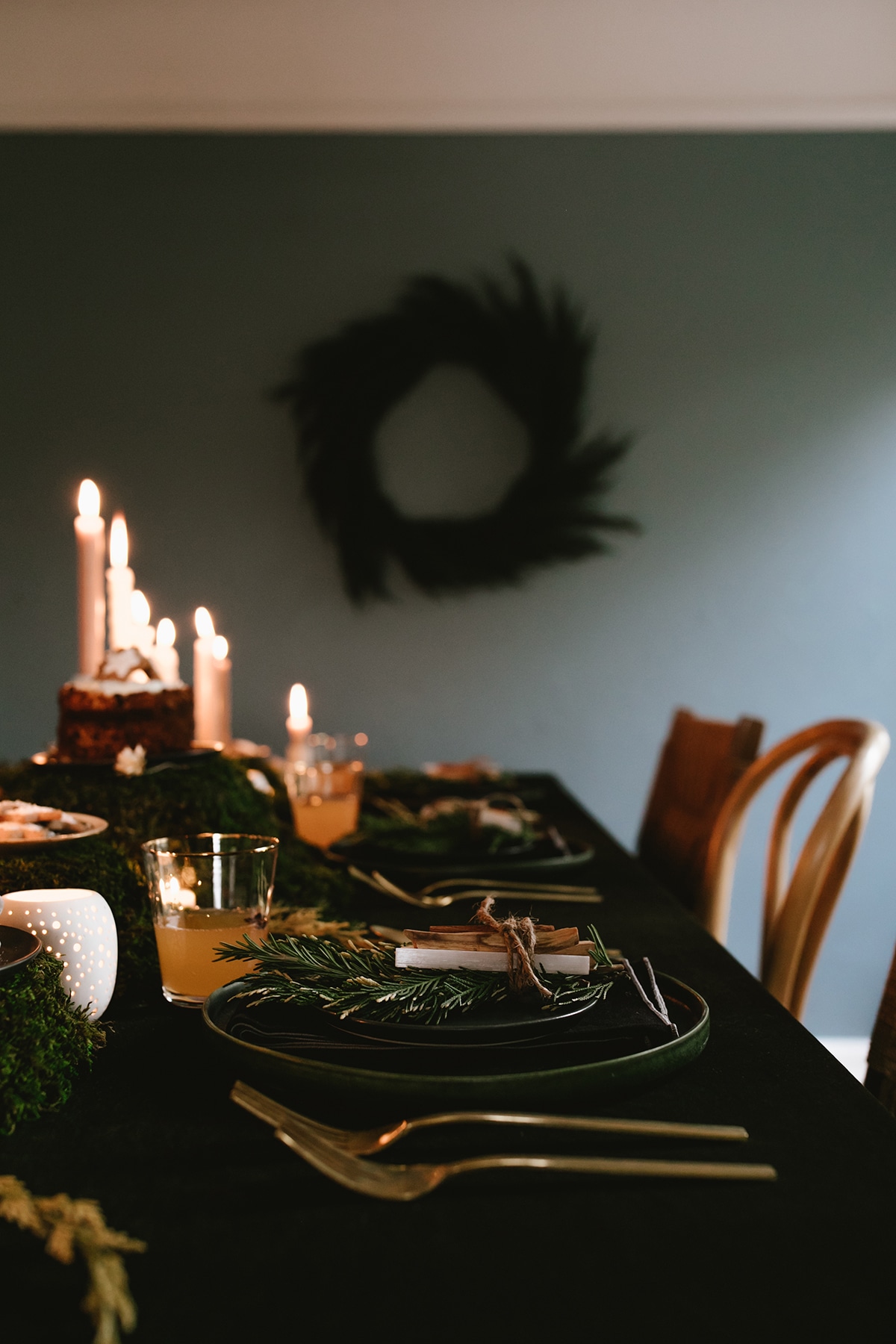
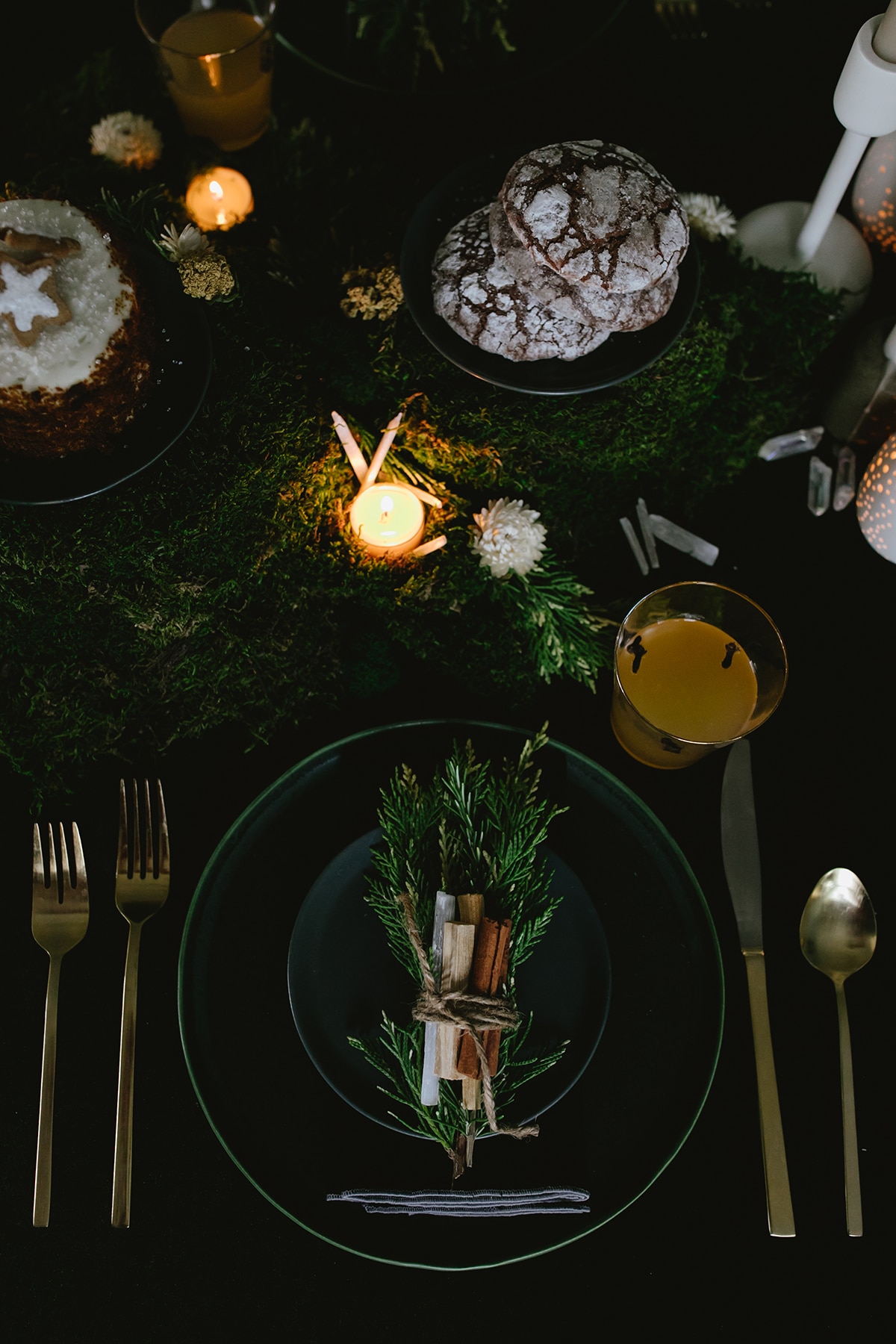
I also added a selenite stick to the solstice smudge bundles I made for each place setting. These are so simple to make! I tied together evergreens, rosemary, cinnamon sticks, palo santo and a selenite stick as a gift for guests. Traditional solstice smudges typically include pine or cedar, cinnamon, rosemary, dried orange, and other herbs.
Now, these are just a few main elements of Winter Solstice, but I’d encourage you to do your own research and adopt whatever forms of celebration feel good to you. That said, one of my favorite things I found while doing my research was a version of the “Twelve Days of Christmas” for solstice. While the tradition of celebrating for twelve days is definitely old, I couldn’t find any historical information on this song. That said… I love the spirit of it. It brings into focus some aspects of the season that I think we could all benefit from putting into practice!
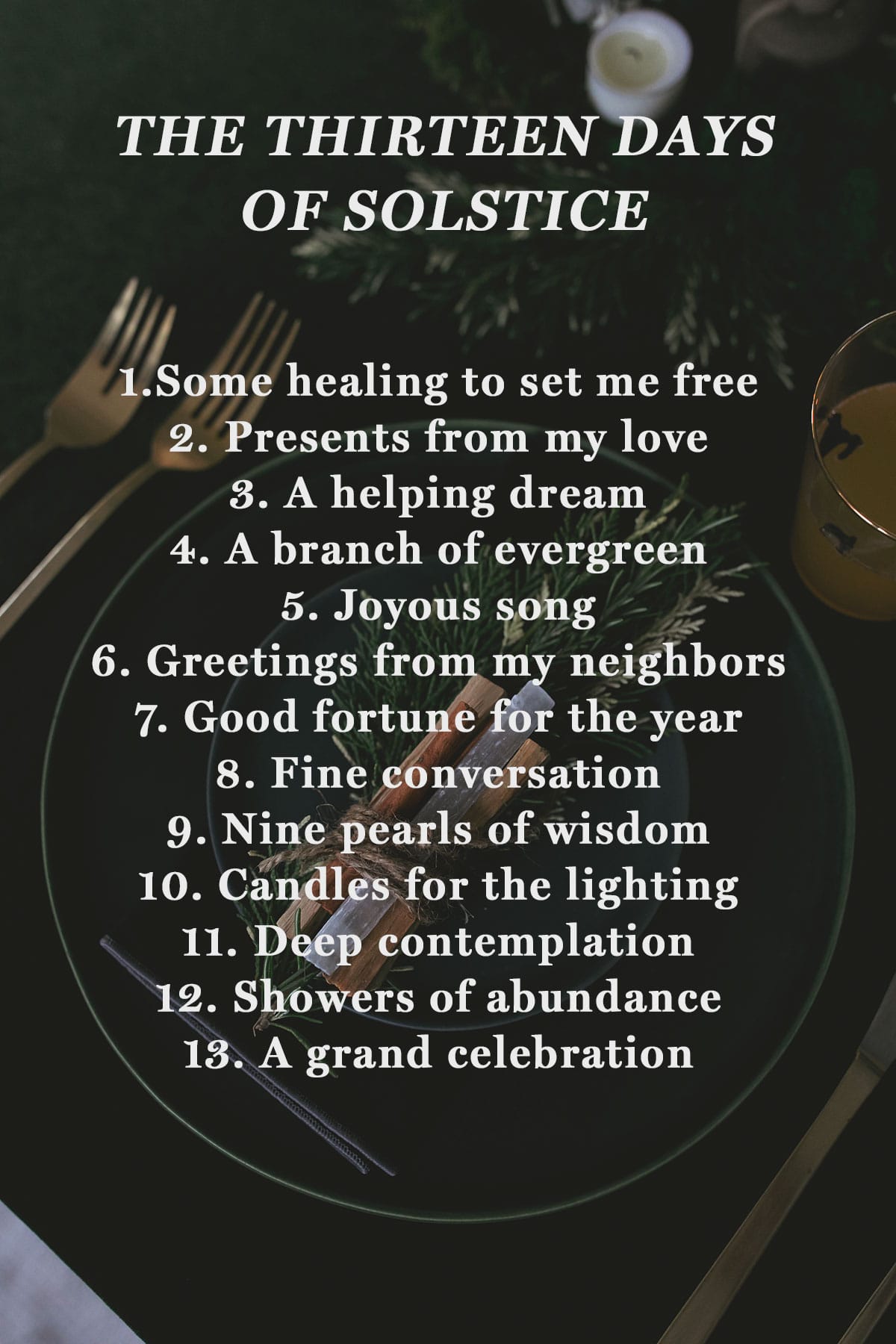
In Yule tradition, solstice begins on Mother Night (December 2oth) and ends 12 days later on ‘Yule Night’ (December 31st) also known as Twelfth Night. But technically there are 13 days of celebration, which makes sense! I also learned that the lunar calendar leaves about 12 days left over each year, the thirteenth day signifies the start of the new cycle. So the twelve nights of Yule were considered neither part of the old year, nor part of the new year, but rather a time when the veil between the worlds is thin, gods walk the earth and people may see the ‘elves’ or other spirits that live around us. It was also tradition to not work at all during this time, but to focus on family. Now that’s a practice I can get on board with!
Today being the 20th, you could start this practice today with a little healing – whatever that looks like to you. A hot bath, some herbal tea, meditation, a conversation with a friend… I’m going to attempt to go down the list of these leading up to New Years Eve and do my best to apply them to my everyday life during this Yuletide. You could also envision these as gifts to give others, just like the 12 Day of Christmas!
Whatever you take away from these traditions, I wish you all a warm Winter Solstice!!